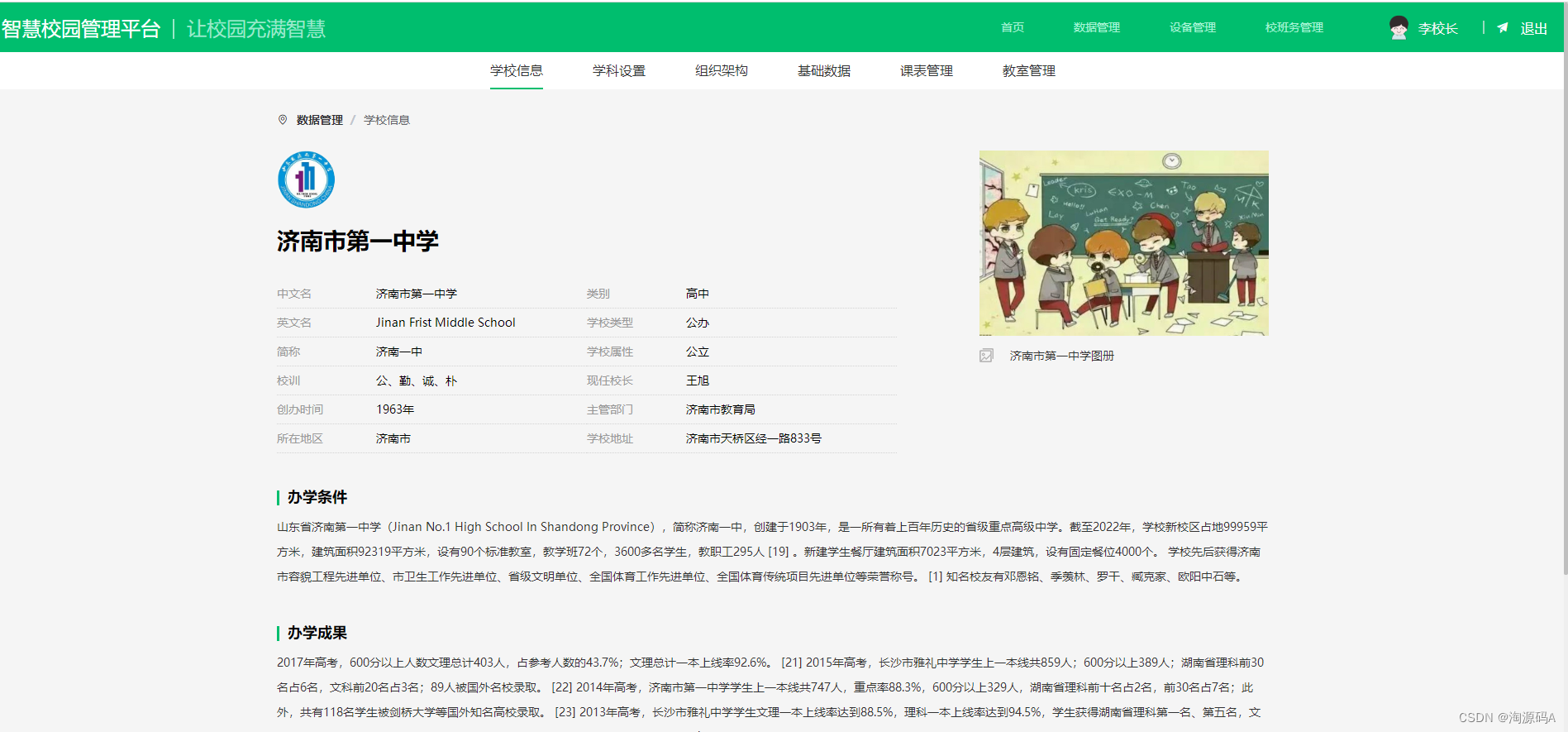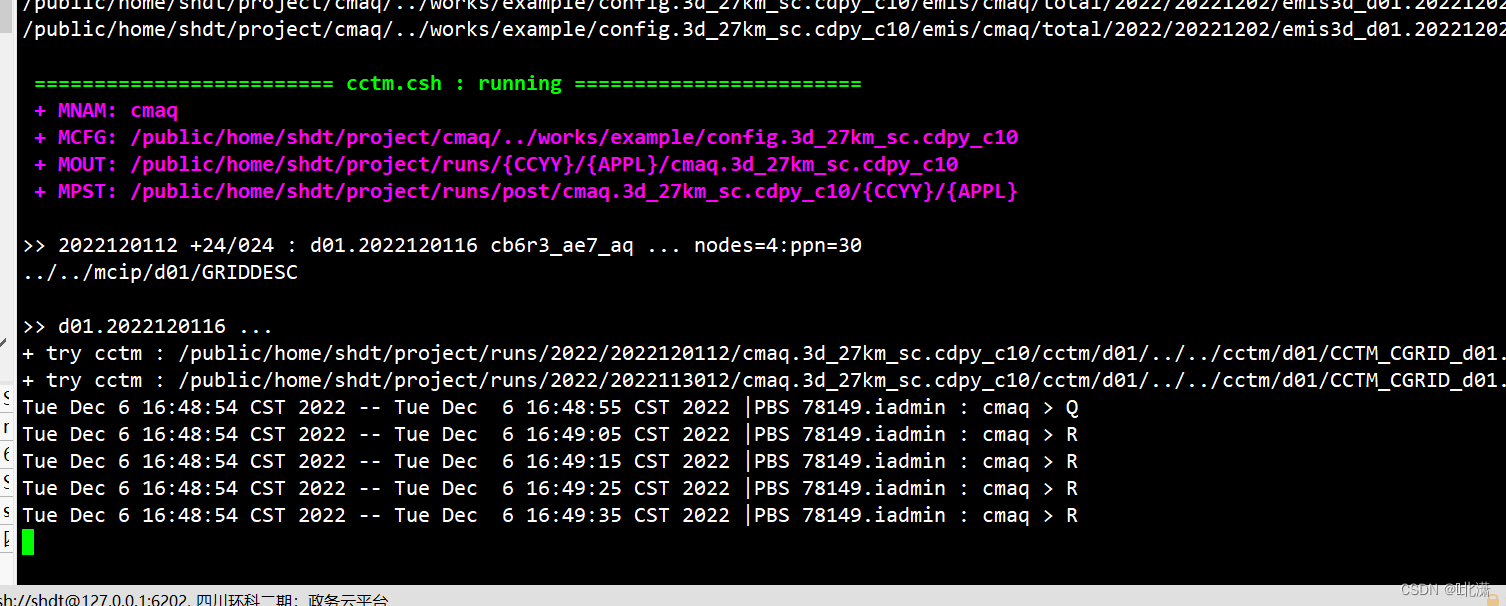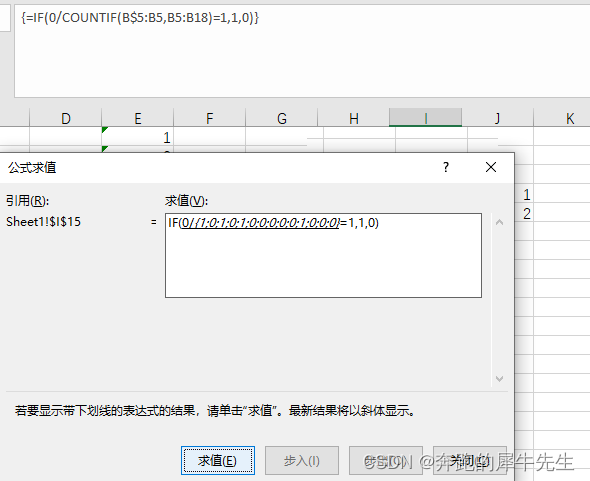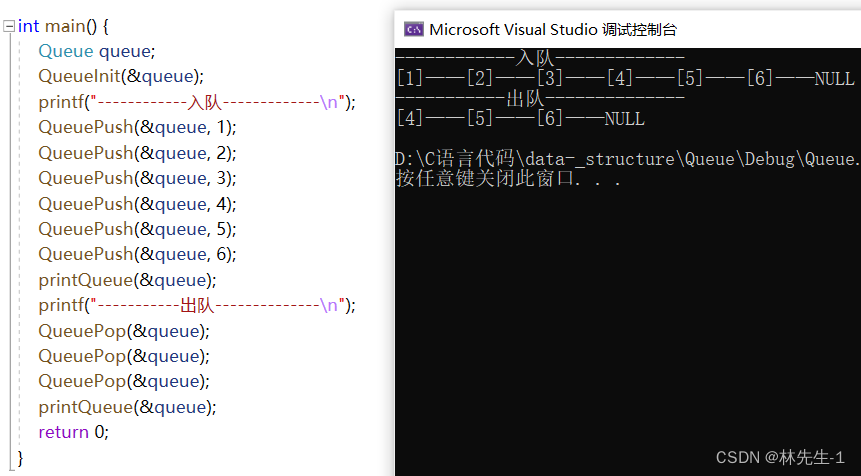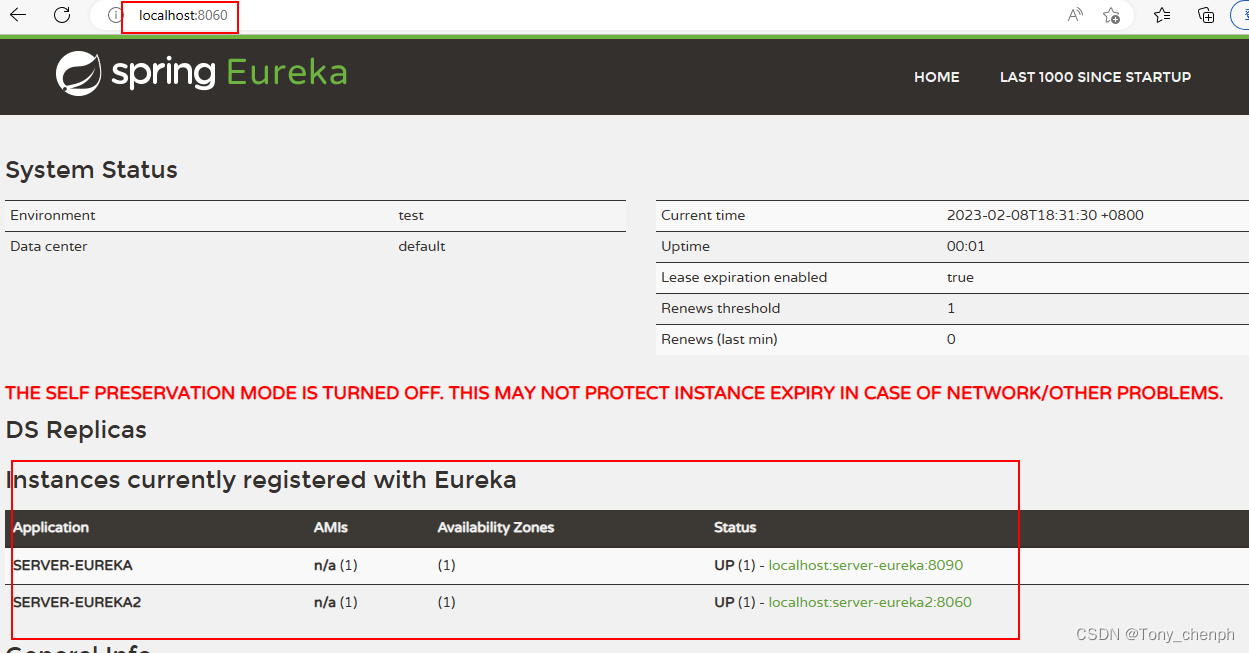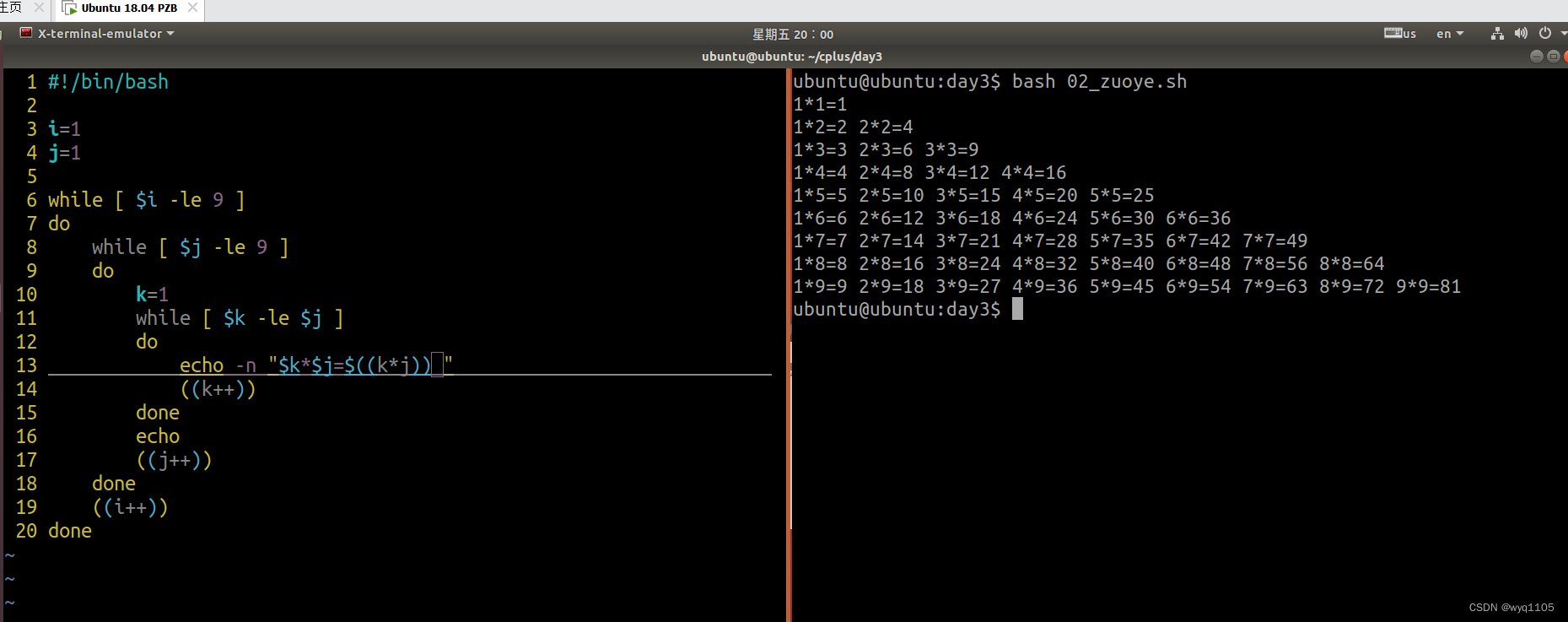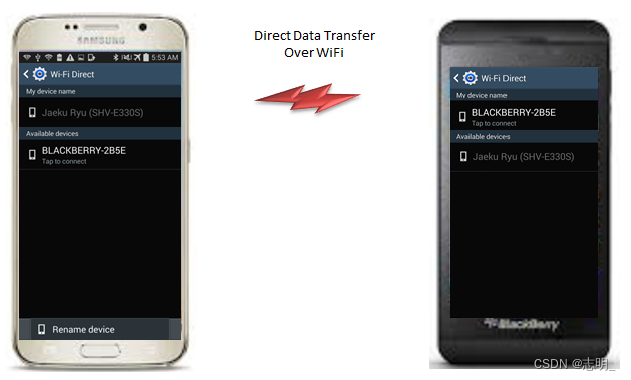java异常总结
什么是异常?
在Java中,将程序执行过程中发生的不正常行为称为异常。
常见异常举例
1.算数异常ArithmeticException
public class Test{
public static void main(String[] args) {
System.out.println(10/0);
}
}
报错

ArithmeticException//算数异常
我们点击ArithmeticException会发现所谓的异常也是一个类
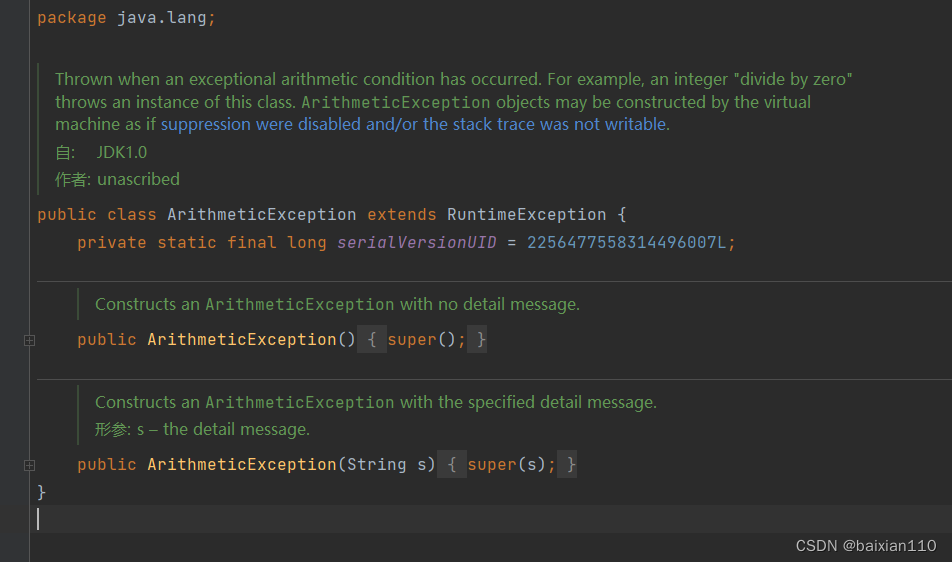
2.数组越界异常ArrayIndexOutOfBoundsException
public class Test{
public static void main(String[] args) {
int[] arr = {1, 2, 3};
System.out.println(arr[100]);
}
}
报错

3.空指针异常NullPointerException
public class Test{
public static void main(String[] args) {
int[] arr = null;
System.out.println(arr.length);
}
}
报错

异常的分类
1. 编译时异常
在程序编译期间发生的异常,称为编译时异常,也称为受检查异常(Checked Exception)
public class Person {
int age;
private String name;
private String gender;
// 想要让该类支持深拷贝,覆写Object类的clone方法即可
@Override
public Person clone() {
return (Person) super.clone();
}
}
报错

我们会发现这段代码实际在IDEA写完后clone.()处会出现下划的红色波浪线
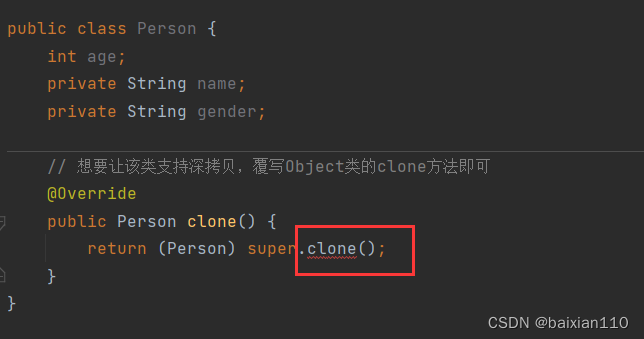 这表明在这个异常在编译时就会出错,前面几个异常源码写在IDEA里面是不会有下划线的所以前面的是运行时异常,而这个就是编译时异常,但是编译时异常是可以解决的,可以通过throws关键字解决
这表明在这个异常在编译时就会出错,前面几个异常源码写在IDEA里面是不会有下划线的所以前面的是运行时异常,而这个就是编译时异常,但是编译时异常是可以解决的,可以通过throws关键字解决
就像下面这样
public class Person {
int age;
private String name;
private String gender;
// 想要让该类支持深拷贝,覆写Object类的clone方法即可
@Override
public Person clone() throws CloneNotSupportedException {
return (Person) super.clone();
}
}
如下图就没有报错了
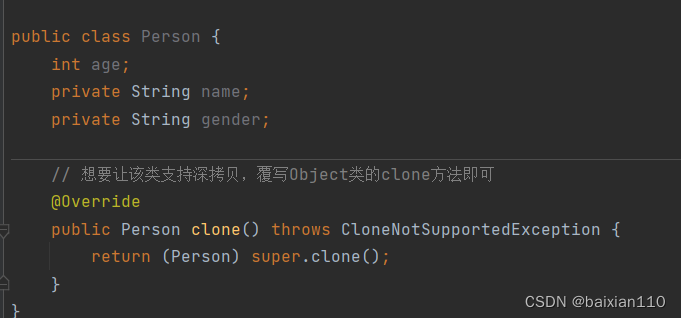
2.运行时异常
在程序执行期间发生的异常,称为运行时异常,也称为非受检查异常(Unchecked Exception)RunTimeException以及其子类对应的异常,都称为运行时异常。比如:NullPointerException、ArrayIndexOutOfBoundsException、ArithmeticException。
编译时出现的语法性错误,不能称之为异常。例如忘记写分号,这个也会出现下划线,但是这个不能称之为异常 此时编译过程中就会出错, 这是 “编译期” 出错。而运行时指的是程序已经编译通过得到class 文件了, 再由 JVM 执行过程中出现的错误.
异常的继承关系
异常既然是类,那么异常就是有继承关系的
如下图
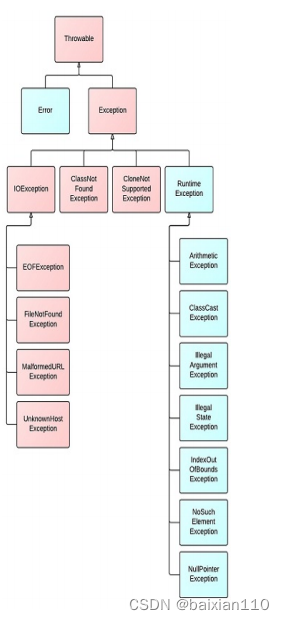
- Throwable:是异常体系的顶层类,其派生出两个重要的子类, Error 和 Exception
- Error:指的是Java虚拟机无法解决的严重问题,比如:JVM的内部错误、资源耗尽等,典型代表:StackOverflowError和OutOfMemoryError,一旦发生回力乏术。
- Exception:异常产生后程序员可以通过代码进行处理,使程序继续执行。我们平时所说的异常就是Exception。
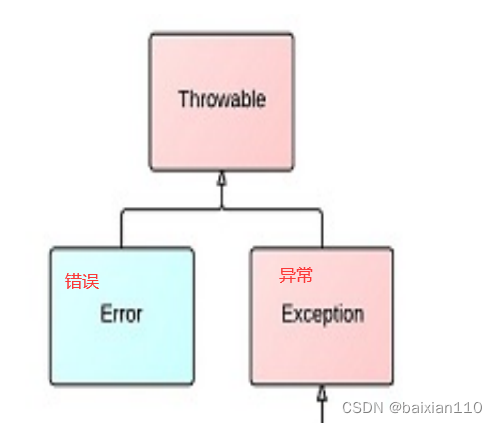
java中所有的错误和异常均继承于Throwsable类,我们双敲shift进入搜索框,输入Throws类,如下图

Error 错误
比如说,我们在没有终止条件的递归中就会出现StackOverflowError栈溢出错误
public class Test {
public static void func(){
func();
}
public static void main(String[] args) {
func();
}
}

异常的处理
LBYL: Look Before You Leap. 在操作之前就做充分的检查. 即:事前防御型
boolean ret = false;
ret = 登陆游戏();
if (!ret) {
处理登陆游戏错误;
return;
}
ret = 开始匹配();
if (!ret) {
处理匹配错误;
return;
}
ret = 游戏确认();
if (!ret) {
处理游戏确认错误;
return;
}
ret = 选择英雄();
if (!ret) {
处理选择英雄错误;
return;
}
ret = 载入游戏画面();
if (!ret) {
处理载入游戏错误;
return;
}
缺陷:正常流程和错误处理流程代码混在一起, 代码整体显的比较混乱。
EAFP: It’s Easier to Ask Forgiveness than Permission. “事后获取原谅比事前获取许可更容易”. 也就是先操作, 遇到问题再处理. 即:事后认错型
try {
登陆游戏();
开始匹配();
游戏确认();
选择英雄();
载入游戏画面();
...
} catch (登陆游戏异常) {
处理登陆游戏异常;
} catch (开始匹配异常) {
处理开始匹配异常;
} catch (游戏确认异常) {
处理游戏确认异常;
} catch (选择英雄异常) {
处理选择英雄异常;
} catch (载入游戏画面异常) {
处理载入游戏画面异常;
}
......
优势:正常流程和错误流程是分离开的, 程序员更关注正常流程,代码更清晰,容易理解代码,异常处理的核心思想就是 EAFP。
在Java中,异常处理主要的5个关键字:throw、try、catch、final、throws。
异常的抛出
在Java中,可以借助throw关键字,抛出一个指定的异常对象,将错误信息告知给调用者。具体语法如下:throw new XXXException("异常产生的原因");
比如我们自己定义一个空指针异常
public class Test {
public static void exception(int[] arr){
if(arr == null){
throw new NullPointerException("指向数组的引用为空");
}
}
public static void main(String[] args) {
exception(null);
}
}
 刚刚的异常是系统自带的空指针异常
刚刚的异常是系统自带的空指针异常
我们也可以自己自定义一个异常然后抛出
public class Test {
public static int getElement(int[] array, int index) {
if (null == array) {
throw new NullPointerException("传递的数组为null");
}
if (index < 0 || index >= array.length) {
throw new ArrayIndexOutOfBoundsException("传递的数组下标越界");
}
return array[index];
}
public static void main(String[] args) {
int[] array = {1, 2, 3};
getElement(array, 3);
}
}

注意:
- throw必须写在方法体内部
- 抛出的对象必须是Exception 或者 Exception 的子类对象
- 如果抛出的是 RunTimeException(运行时异常) 或者 RunTimeException 的子类,则可以不用处理,直接交给JVM来处理(注意这里并不是说运行时异常可以编运行,依旧是不能运行的)。
- 如果抛出的是编译时异常,用户必须处理,否则无法通过编译
- 异常一旦抛出,其后的代码就不会执行
异常的捕获
异常的捕获,也就是异常的具体处理方式,主要有两种:异常声明throws 以及 try-catch捕获处理。
1.异常声明throws
处在方法声明时参数列表之后,当方法中抛出编译时异常,用户不想处理该异常,此时就可以借助throws将异常抛给方法的调用者来处理。即当前方法不处理异常,提醒方法的调用者处理异常。
语法格式:
修饰符 返回值类型 方法名(参数列表) throws 异常类型1,异常类型2...{
}
比如
public class Test {
public static int getElement(int[] array, int index)throws NullPointerException,ArrayIndexOutOfBoundsException {
if (null == array) {
throw new NullPointerException("传递的数组为null");
}
if (index < 0 || index >= array.length) {
throw new ArrayIndexOutOfBoundsException("传递的数组下标越界");
}
return array[index];
}
public static void main(String[] args)throws NullPointerException,ArrayIndexOutOfBoundsException {
int[] array = {1, 2, 3};
getElement(array, 3);
System.out.println("这行代码并没有被执行");
}
}
注意,这个例子中异常我们是处理了的,但是没有解决,程序执行到这里发现异常,抛出异常之后,会在这里直接中断,后续代码是不会执行的,所有本例子里面没有打印“这行代码并没有被执行”这行字。
在本例子中,这个越剧异常getElement方法没有解决,抛出异常,交给调用者main方法,main方法也没有解决,依旧抛出最后交给了JVM当我们没有解决这个异常的时候,这个异常就交给JVM,一旦交给JVM,程序就崩溃了。
try-catch捕获并处理
throws对异常并没有真正处理,而是将异常报告给抛出异常方法的调用者,由调用者处理。如果真正要对异常进行
处理,就需要try-catch。
语法格式:
try{
// 将可能出现异常的代码放在这里
}catch(要捕获的异常类型 e){
// 如果try中的代码抛出异常了,此处catch捕获时异常类型与try中抛出的异常类型一致时,或者是try中抛出异常的基类
时,就会被捕获到
// 对异常就可以正常处理,处理完成后,跳出try-catch结构,继续执行后序代码
}[catch(异常类型 e){
// 对异常进行处理
}finally{
// 此处代码一定会被执行到
}]
// 后序代码
// 当异常被捕获到时,异常就被处理了,这里的后序代码一定会执行
// 如果捕获了,由于捕获时类型不对,那就没有捕获到,这里的代码就不会被执行
注意:
1. []中表示可选项,可以添加,也可以不用添加
2. try中的代码可能会抛出异常,也可能不会
举个例子说明
public class Test {
public static int getElement(int[] array, int index) {
return array[index];
}
public static void main(String[] args) {
int[] array = {1, 2, 3};
try {
getElement(array, 3);//try中写可能抛出异常的代码
} catch (NullPointerException e) {//捕捉异常
//catch里面捕获异常之后需要的处理
System.out.println("捕获到 NullPointerException 异常,进行处理异常逻辑");
e.printStackTrace();//打印栈上的信息,也就是异常出现的一些信息,就会出现红字。
} catch (ArrayIndexOutOfBoundsException e) {
System.out.println("捕获到ArrayIndexOutOfBoundsException 异常,进行处理异常逻辑");
e.printStackTrace();
}
System.out.println("异常后面的代码正常执行");//之前的throws抛出异常后,后面的代码是直接中断不执行的,所以并不能称之为处理异常,而这里后面的代码继续执行,说明这个异常被处理了。
}
}

异常的种类有很多, 我们要根据不同的业务场景来决定.
对于比较严重的问题(例如和算钱相关的场景), 应该让程序直接崩溃, 防止造成更严重的后果
对于不太严重的问题(大多数场景), 可以记录错误日志, 并通过监控报警程序及时通知程序猿
对于可能会恢复的问题(和网络相关的场景), 可以尝试进行重试.
在我们当前的代码中采取的是经过简化的第二种方式. 我们记录的错误日志是出现异常的方法调用信息, 能很快速的让我们找到出现异常的位置. 以后在实际工作中我们会采取更完备的方式来记录异常信息.
注意:
- 抛出异常位置之后的代码将不会被执行(注意这里面的之后的代码指异常之后的所有代码,不单单指try块内的代码)
- 如果抛出异常类型与catch时异常类型不匹配,即异常不会被成功捕获,也就不会被处理,继续往外抛,直到JVM收到后中断程序----异常是按照类型来捕获的
- try中可能会抛出多个不同的异常对象,则必须用多个catch来捕获----即多种异常,多次捕获
public class Test {
public static int getElement(int[] array, int index) {
return array[index];
System.out.println("这段代码也不会执行");
}
public static void main(String[] args) {
int[] array = {1, 2, 3};
try {
System.out.println("这行代码会执行");
getElement(array, 3);
System.out.println("这行代码不会执行");//try里面可能发生异常代码之后的代码不执行
} catch (NullPointerException e) {//正在的异常并没有被捕获,此时会直接抛出异常,异常最终交给JVM,程序中断,后续代码也不会执行
System.out.println("捕获到 NullPointerException 异常,进行处理异常逻辑");
e.printStackTrace();
} /*catch (ArrayIndexOutOfBoundsException e) {
System.out.println("捕获到ArrayIndexOutOfBoundsException 异常,进行处理异常逻辑");
e.printStackTrace();
}*/
System.out.println("这行代码也不会执行");
}
}
但是注意发生异常的中断,异常的中断并不是以一行代码为单位的,换句话说并不是说一行代码里面有两个异常就会抛出两个异常,而是只会抛出一个异常,因为另外一个还没有执行就被中断了,所以“try中可能会抛出多个不同的异常对象”并不是指会同时抛出,而是在不同条件下(比如if else下)分别抛出。如下面这个例子
public class Test {
public static int getElement(int[] array, int index) {
int[] arr = {1,2,3};
//一行代码里有越界有空指针
arr[4] = array[index];//arr[4]也不会执行,前面就发生异常中断了
System.out.println("这行代码不执行");//不会执行
return arr[4];//不会执行
}
public static void main(String[] args) {
int[] array = {1, 2, 3};
try {
int arr = getElement(null, 3);
} catch (ArrayIndexOutOfBoundsException e) {
System.out.println("捕获到ArrayIndexOutOfBoundsException 异常,进行处理异常逻辑");
e.printStackTrace();
} catch (NullPointerException e) {//率先被捕获
System.out.println("捕获到 NullPointerException 异常,进行处理异常逻辑");
e.printStackTrace();
}
System.out.println("这行代码会执行");
}
}
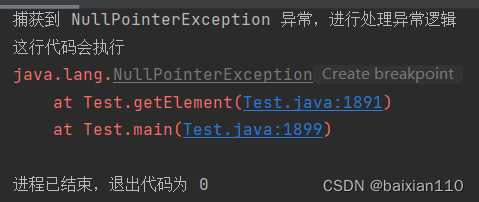
- 对于首查异常而言,如果try中没有抛出异常,那么catch中检测不到就在编译时就会报错(显示出红色波浪下划线)
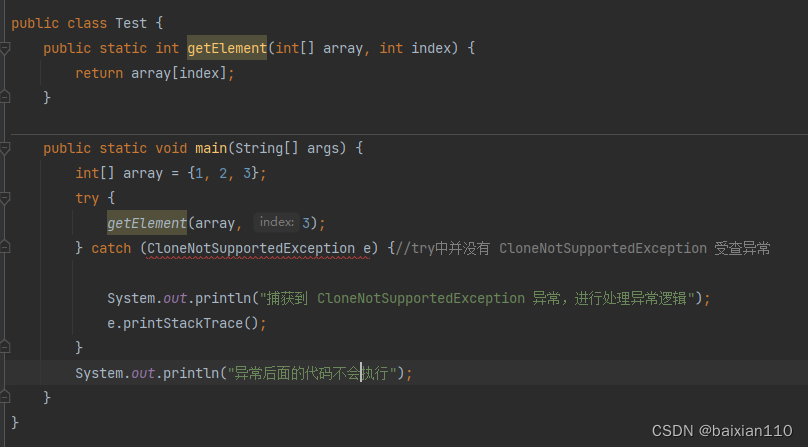
- 如果多个异常的处理方式是完全相同, 也可以写成这样:
catch (ArrayIndexOutOfBoundsException | NullPointerException e) {
...
}
- 如果异常之间具有父子关系,一定是子类异常在前,父类异常在后 ,否则语法错误。catch 进行类型匹配的时候, 不光会匹配相同类型的异常对象, 也会捕捉目标异常类型的子类对象.如刚才的代码, NullPointerException ArrayIndexOutOfBoundsException 都是 Exception 的子类,因此都能被捕获到.
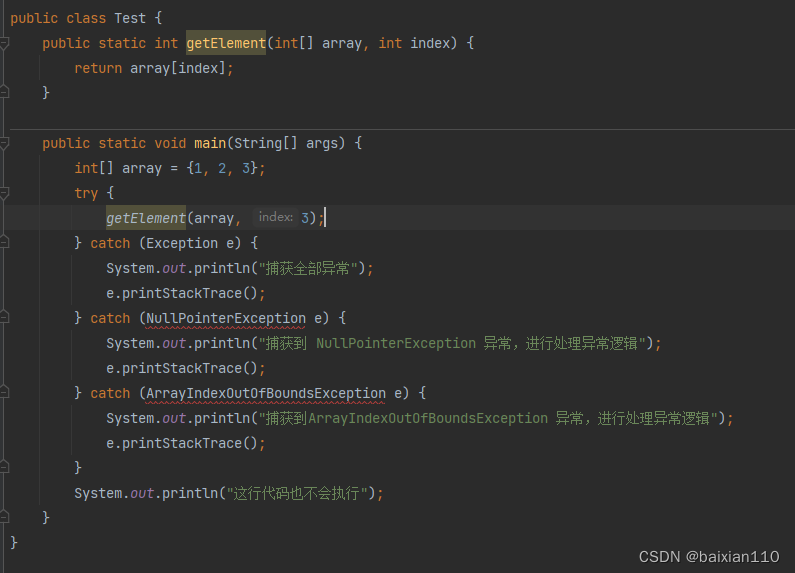 如下代码就不会报错(没有下划线 )
如下代码就不会报错(没有下划线 )
当try中存在多个异常时,谁先抛出异常就先捕获并处理哪一个异常,catch不影响异常捕获的顺序,同时,子类异常抛出后,父类异常不会再抛出。
public class Test {
public static int getElement(int[] array, int index) {
int ret = array[index];
System.out.println("这行代码不执行");
return ret;
}
public static void main(String[] args) {
int[] array = {1, 2, 3};
try {
int arr = getElement(null, 3);
} catch (ArrayIndexOutOfBoundsException e) {
System.out.println("捕获到ArrayIndexOutOfBoundsException 异常,进行处理异常逻辑");
e.printStackTrace();
} catch (NullPointerException e) {//率先被捕获
System.out.println("捕获到 NullPointerException 异常,进行处理异常逻辑");
e.printStackTrace();
}catch (Exception e) {//父类异常不会被抛出
System.out.println("捕获全部异常");
e.printStackTrace();
}
System.out.println("这行代码会执行");
}
}

finally
在写程序时,有些特定的代码,不论程序是否发生异常,都需要执行,比如程序中打开的资源:网络连接、数据库
连接、IO流等,在程序正常或者异常退出时,必须要对资源进进行回收。另外,因为异常会引发程序的跳转,可能
导致有些语句执行不到,finally就是用来解决这个问题的。
不管try是否会抛出异常,finally中代码一定会被执行。
语法格式:
try{
// 可能会发生异常的代码
}catch(异常类型 e){
// 对捕获到的异常进行处理
}finally{
// 此处的语句无论是否发生异常,都会被执行到
}
// 如果没有抛出异常,或者异常被捕获处理了,这里的代码也会执行
如下面这个例子
import java.util.Scanner;
public class Test {
public static int getElement(int[] array, int index) {
return array[index];
}
public static void main(String[] args) {
Scanner scanner = new Scanner(System.in);//scanner本身就是一个资源,使用完需要调用close方法关闭
int[] array = {1, 2, 3};
try {
int a = scanner.nextInt();
array[2] = a;
int arr = getElement(null, 3);
} catch (NullPointerException e) {
System.out.println("捕获到 NullPointerException 异常,进行处理异常逻辑");
e.printStackTrace();
}
finally{
scanner.close();
System.out.println("finally执行了");
}
System.out.println("这行代码会执行");
}
}
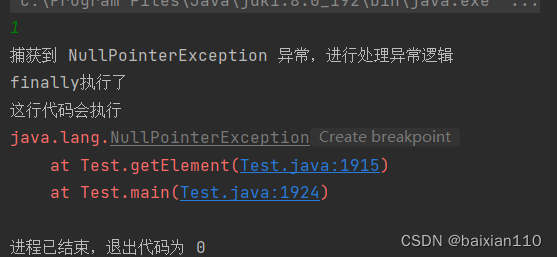 来看下面一道面试题
来看下面一道面试题
public class Test {
public static int func() {
try{
int a = 10;
return a;
}catch(NullPointerException e){
return 1;
}finally {
return 9;
}
}
public static void main(String[] args) {
System.out.println(func());
}
}
try里面有return,finally里面有return,这样到返回哪个值呢?
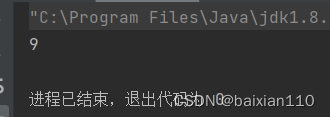
finally 执行的时机是在方法返回之前(try 或者 catch 中如果有 return 会在这个 return 之前执行 finally). 但是如果
finally 中也存在 return 语句, 那么就会执行 finally 中的 return, 从而不会执行到 try 中原有的 return.
一般我们不建议在 finally 中写 return (被编译器当做一个警告)
异常处理流程
- 程序先执行 try 中的代码 如果 try 中的代码出现异常, 就会结束 try 中的代码, 看和 catch 中的异常类型是否匹配.
- 如果找到匹配的异常类型, 就会执行 catch 中的代码 如果没有找到匹配的异常类型, 就会将异常向上传递到上层调用者.
- 无论是否找到匹配的异常类型, finally 中的代码都会被执行到(在该方法结束之前执行).
- 如果上层调用者也没有处理的了异常,就继续向上传递. 一直到 main 方法也没有合适的代码处理异常, 就会交给 JVM 来进行处理, 此时程序就会异常终止.
public static void main(String[] args) {//0
try {//1
func();//2
} catch (ArrayIndexOutOfBoundsException e) {//3
e.printStackTrace();//4
}
System.out.println("after try catch");//5
}
public static void func() {//6
int[] arr = {1, 2, 3};//7
System.out.println(arr[100]);//8
}
}
执行顺序是012678345
自定义异常类
此时我们在处理用户名密码错误的时候可能就需要抛出两种异常. 我们可以基于已有的异常类进行扩展(继承), 创建
和我们业务相关的异常类.
具体方式:
- 自定义异常类,然后继承自Exception 或者 RunTimeException
- 实现一个带有String类型参数的构造方法,参数含义:出现异常的原因
如下面这个例子
我们定义一个NameExcepetion类继承Exception并且调用参数的构造方法用于提示造成异常的原因
public class NameExcepetion extends Exception{
//自定义的错误必须继承Exceptiion或者RuntimeException,
// 前者是所以异常的父类,可以用以表示编译时异常,后者可以专门用以表示允许时异常
public NameExcepetion(String message) {
super(message);
}
}
再定义一个PasswordException类继承Exception,并且调用参数的构造方法用于提示造成异常的原因
public class PasswordException extends Exception{
public PasswordException(String message) {
super(message);
}
}
然后定义一个登录类用于登录实现
import java.util.Scanner;
public class Login {
private static String name = "baixian";
private static String passworld = "123456";
public static void login(String inputName, String inputPassword) throws NameExcepetion, PasswordException {
//用throws将异常抛出,交给调用方法main处理
if (!name.equals(inputName)) {
throw new NameExcepetion("用户名输入错误");//调用带参数的构造方法实例化一个NameExcepetion,也就是提出一个ameExcepetion异常
}
if (!passworld.equals(inputName)) {
throw new PasswordException("密码输入错误");
}
}
public static void main(String[] args) {
Scanner scanner = new Scanner(System.in);
try {
System.out.println("请输入用户名:");
String inputName = scanner.nextLine();
System.out.println("请输入密码:");
String inputPassword = scanner.next();
login(inputName, inputPassword);
} catch (NameExcepetion nameExcepetion) {//捕获NameExcepetion异常
nameExcepetion.printStackTrace();//打印异常调用栈
System.out.println("处理用户名异常");//main函数处理异常
} catch (PasswordException passwordException) {
passwordException.printStackTrace();
System.out.println("处理密码异常");
}
finally {
scanner.close();
}
}
}
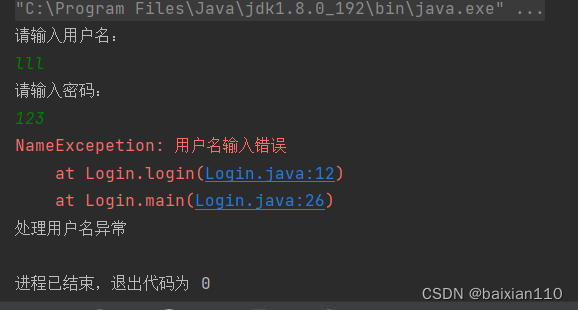
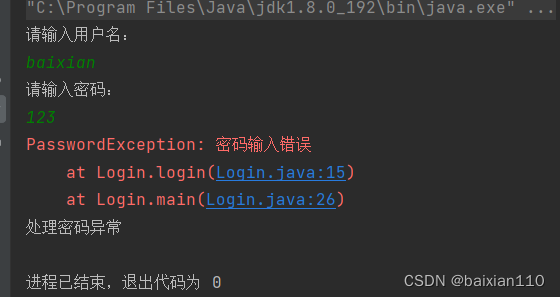



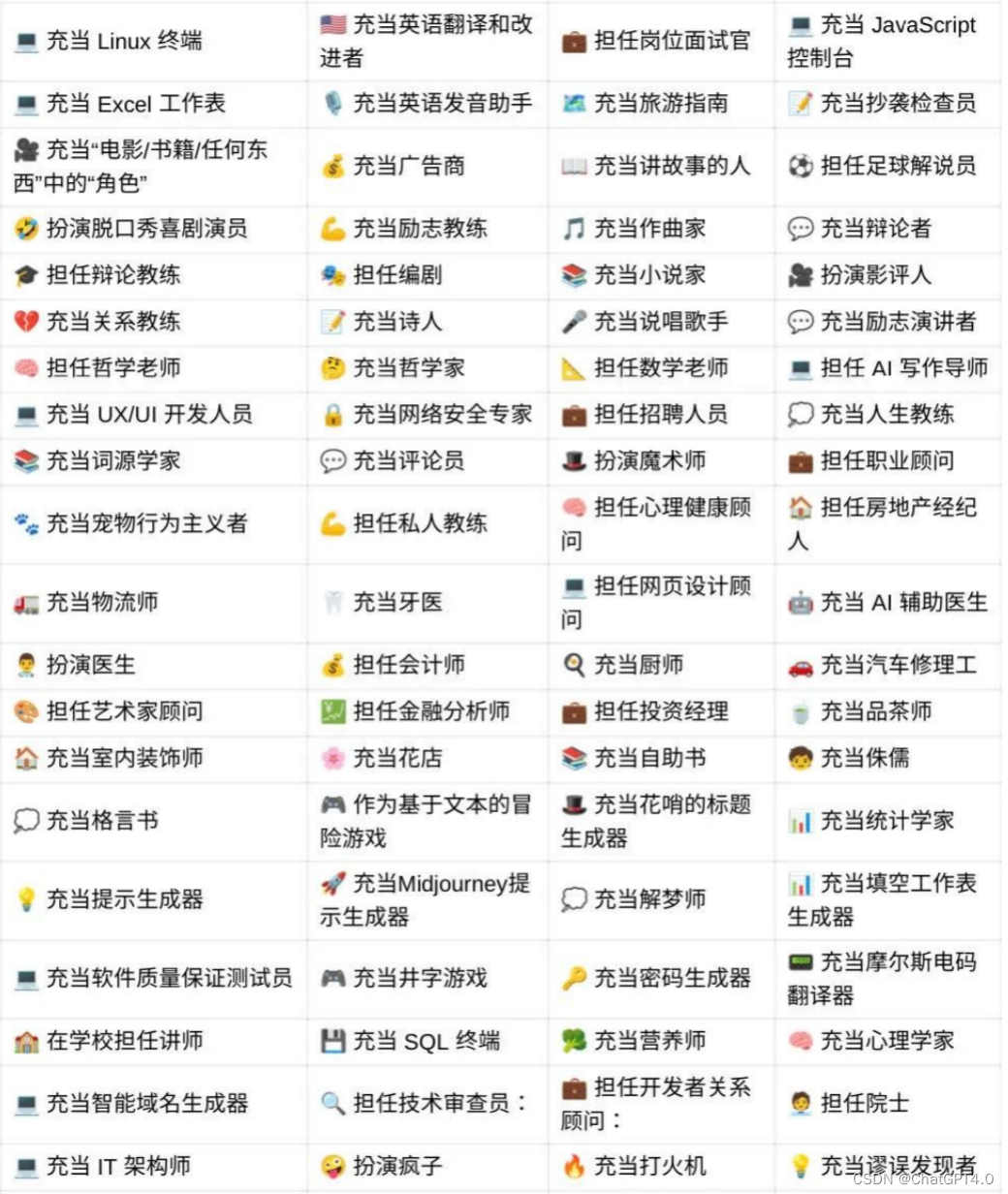

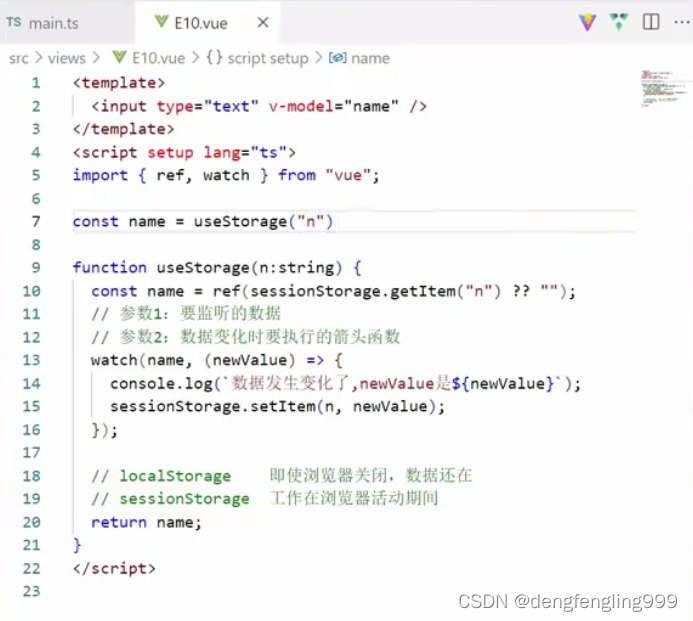
![[译] Flutter 3.10 的新功能](https://img-blog.csdnimg.cn/img_convert/15acedc87677491cbc020b22f104d8ff.png)


